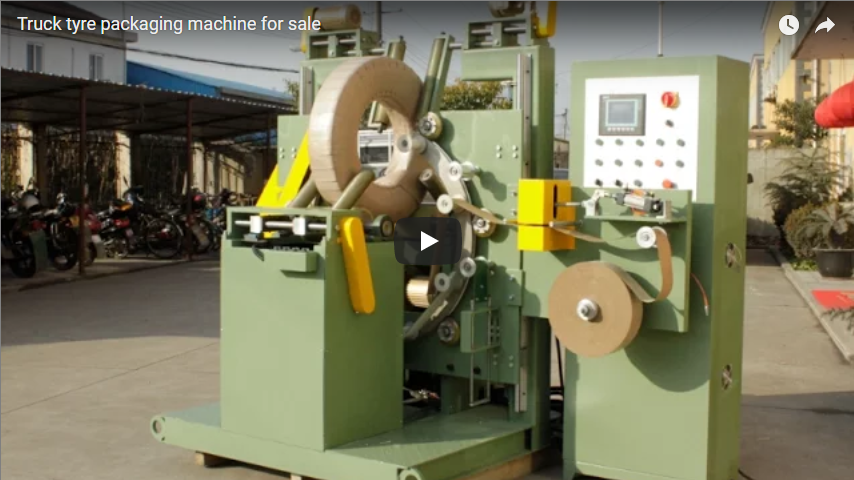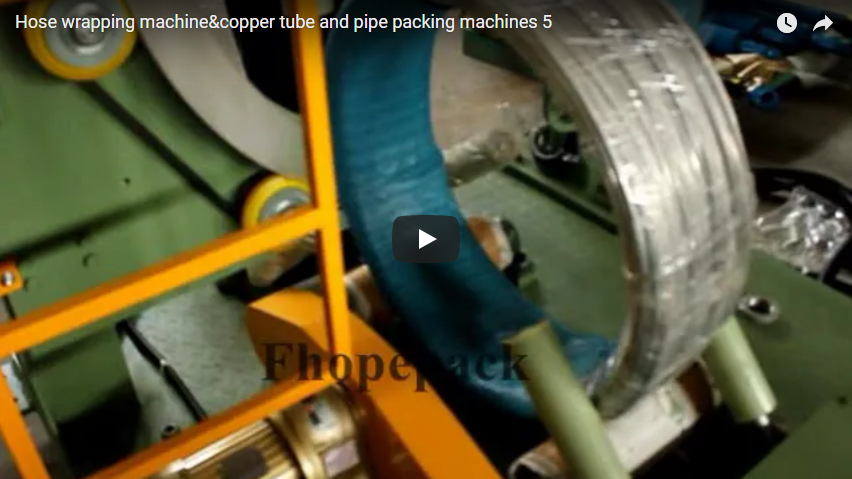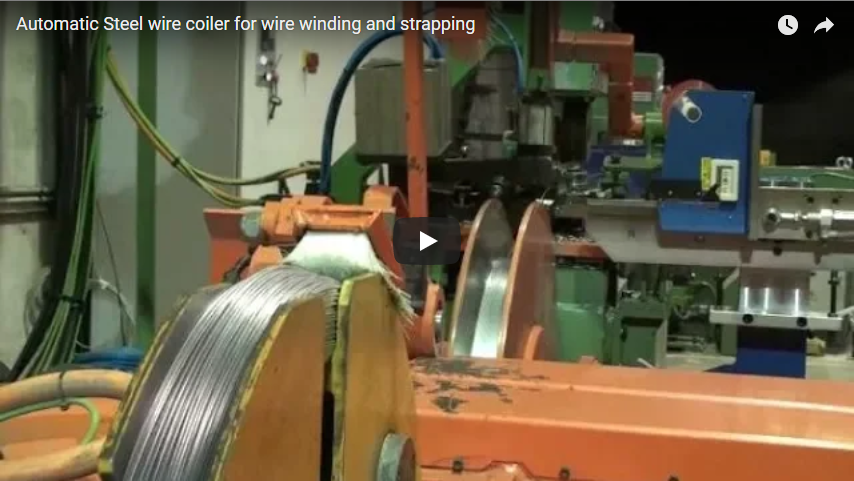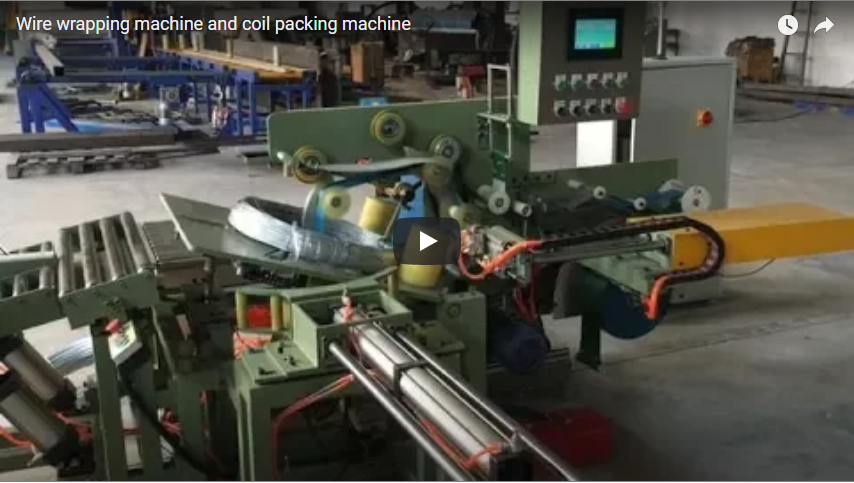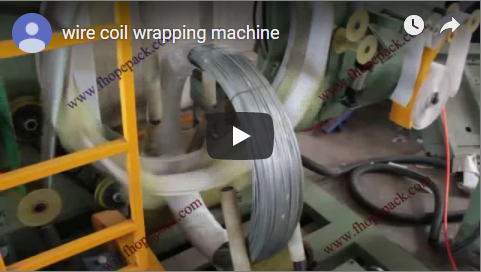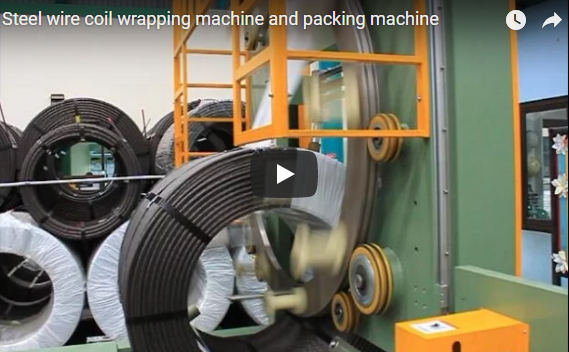In the demanding environment of pre-strand and PC wire manufacturing, ensuring the integrity and protection of finished wire coils during storage and transit is critical. The strand wire coil packing machine provides a specialized, automated solution designed specifically for this purpose. This equipment is engineered to securely wrap heavy steel wire coils using materials such as stretch film, plastic (PE/PVC), VCI paper, or woven fabric, safeguarding them against environmental factors and handling damage. Understanding the technical specifications, design, and operational benefits of these machines is key for manufacturers seeking to optimize their packaging processes.
1. Operational Overview and Structural Design
The wire coil packing machine typically operates by rotating the wire coil either on a turntable or driven rollers while a wrapping shuttle or ring dispenses the packaging material around the coil's profile. The process ensures complete coverage and consistent tension for optimal protection.
- Core Structure: Built upon a robust, heavy-duty steel frame designed to withstand the significant weight and dynamic forces involved in handling large wire coils.
- Coil Handling: Coils are loaded onto a rotating turntable or conveyor rollers. The rotation speed is precisely controlled by the PLC system to synchronize with the wrapping process.
- Wrapping Mechanism: A ring-type shuttle travels through the eye of the coil, carrying the roll of wrapping material. It orbits around the coil's cross-section, applying the film or paper with controlled overlap and tension.
- Control System: Modern machines feature PLC (Programmable Logic Controller) systems paired with an HMI (Human-Machine Interface) touch screen. This allows operators to easily set parameters like wrapping speed, material overlap percentage, tension levels, and starting/ending points.
- Process Flow:
- Coil loading (manual, forklift, or integrated conveyor).
- Automatic positioning of the coil.
- Wrapping cycle initiated via HMI.
- Wrapping material automatically fed, applied, and cut.
- Wrapped coil discharged or moved to the next station.
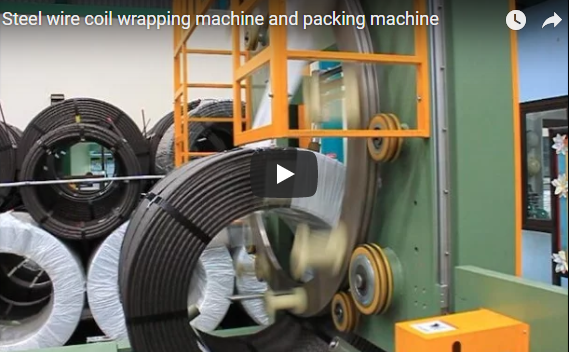
2. Key Technical Specifications
Understanding the technical data is crucial for selecting the right coil wrapping machine for specific production needs.
- Machine Type: Available in Semi-Automatic (requiring operator intervention for loading/unloading and initiation) and Fully Automatic models (integrating seamlessly into automated production lines).
- Suitable Coil Outer Diameter: Typically handles coils ranging from 800mm to 1600mm. Custom ranges are often possible.
- Wrapping Material Compatibility: Versatile use with PE film, PVC film, Stretch Film, Woven Fabric, and VCI (Volatile Corrosion Inhibitor) paper for enhanced rust prevention.
- Wrapping Film Roll Specifications: Accommodates rolls with a Maximum Outer Diameter of 400mm and a standard Inner Diameter (Core) of 76mm.
- Power Requirements: Standard configuration usually 380V, 50Hz, 3-Phase. Adaptable to other regional power standards upon request.
- Approximate Machine Dimensions (L x W x H): 3500mm x 2200mm x 2400mm (Varies based on model and customization).
- Approximate Machine Weight: 2800kg, reflecting its heavy-duty construction.
- Production Capacity (Packing Speed): Capable of wrapping up to 25 coils per hour, depending on coil dimensions, wrapping layers required, and automation level.
- Control System: PLC control with user-friendly HMI touch screen for parameter adjustments, diagnostics, and operational status display.
- Key Automated Features: Includes automatic packing material feeding and cutting, minimizing manual intervention and ensuring consistent wrap termination.
- Safety Features: Equipped with Emergency stop buttons, safety fencing/shields, light curtains (optional), and cut-off sensors to ensure operator safety during operation.
- Operating Temperature Range: Designed to function reliably in industrial environments with temperatures ranging from -25°C to 60°C.
- Customization: Manufacturers often offer customization for specific coil sizes (diameter, width, weight), unique wrapping material requirements, or integration with existing conveyor systems.
3. Core Component Breakdown
The reliability and efficiency of the machine depend on the quality and design of its core components:
- Rotating Turntable / Support Rollers: Precision-engineered to support heavy coils smoothly and rotate them at controlled speeds. Load capacity is a critical design factor.
- Wrapping Ring/Shuttle: The heart of the wrapping process. Its design dictates the speed and smoothness of material application. Often made from cast aluminum or fabricated steel for durability and balance.
- Film/Material Carriage: Holds the material roll and incorporates a tension control system (often adjustable electronically or mechanically) to ensure the wrap is tight and secure without damaging the coil or wasting material.
- PLC and HMI: The brain of the operation, allowing for precise control over all machine functions, recipe storage for different coil types, and fault diagnosis.
- Cutting and Clamping Mechanism: Automated system that precisely cuts the wrapping material at the end of the cycle and clamps the leading edge for the next cycle, ensuring seamless operation.
- Safety Systems: Interlocked guards, E-stops, and sensors are vital for preventing accidents and ensuring compliance with industrial safety standards.
4. Performance Advantages and Industrial Application
Investing in a strand wire coil packing machine offers significant advantages for wire manufacturers:
- Enhanced Coil Protection: Consistent, tightly applied wrapping shields coils from moisture, dust, dirt, and physical damage during handling, storage, and shipping, preserving product quality. Using VCI materials provides active corrosion protection.
- Increased Operational Efficiency: Automation drastically reduces the manual labor required for wrapping, increases throughput (coils per hour), and ensures repeatable, high-quality packaging results compared to manual methods.
- Material Cost Savings: Precise tension control and optimized overlap settings minimize the consumption of wrapping materials like stretch film, leading to direct cost reductions.
- Improved Safety: Automating the wrapping process reduces manual handling of heavy coils and sharp materials, significantly lowering the risk of workplace injuries. Integrated safety features further enhance protection.
- Versatility and Adaptability: The ability to handle a wide range of coil diameters (800mm to 1600mm) and utilize various wrapping materials (PE, PVC, stretch film, fabric) makes these machines highly flexible for diverse production requirements. Both semi-automatic and automatic options allow scalability.
- Professional Presentation: Uniformly wrapped coils present a more professional appearance to end customers, reinforcing brand quality.
5. Personal User Experience and Maintenance Insights
From an operational standpoint, modern wire coil wrapping machines are designed with user-friendliness in mind:
- Ease of Operation: The HMI interface typically uses intuitive icons and clear language, making it easy for operators to set parameters, monitor the process, and troubleshoot minor issues. Stored recipes for different coil sizes streamline changeovers.
- Reliability: Built for industrial environments, these machines generally offer high uptime when properly maintained. The robust construction ensures longevity.
- Maintenance: Routine maintenance typically involves lubrication of moving parts (bearings, chains), sensor checks and cleaning, inspection of the cutting mechanism, and ensuring the film tensioning system is functioning correctly. Scheduled maintenance is crucial for optimal performance.
- Training: While operation is simplified via the HMI, initial operator training is important to understand machine functions, safety procedures, and basic troubleshooting steps.
In conclusion, the wire coil packing machine represents a vital investment for PC wire and pre-strand wire manufacturers aiming to enhance product protection, improve operational efficiency, and ensure safety in their packaging operations. Its robust design, advanced control features, and adaptability make it an indispensable tool in modern wire production facilities.

